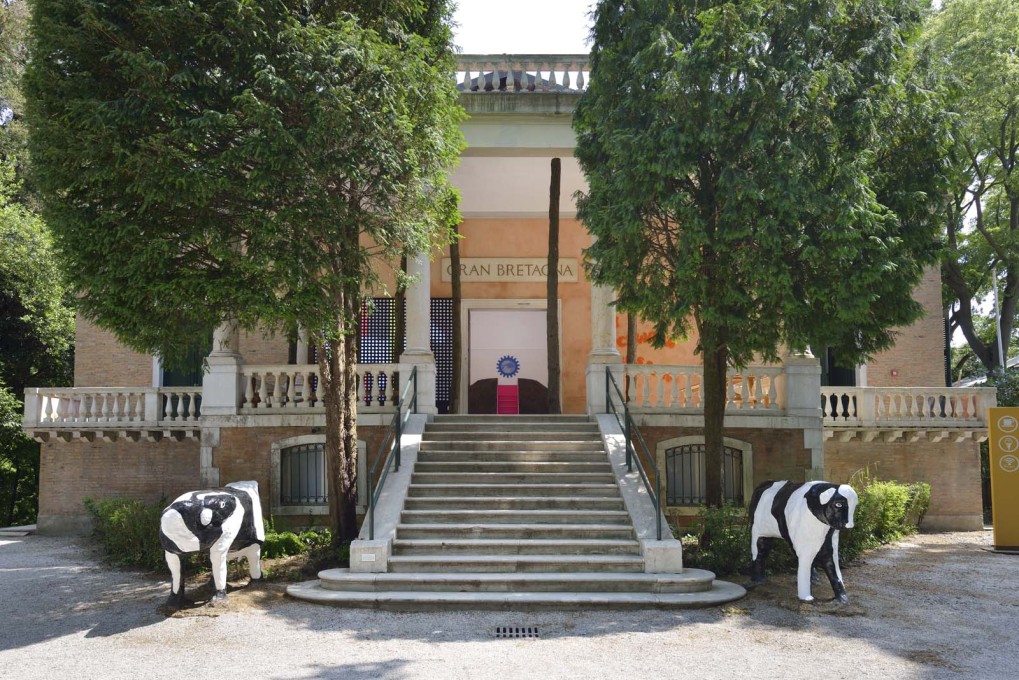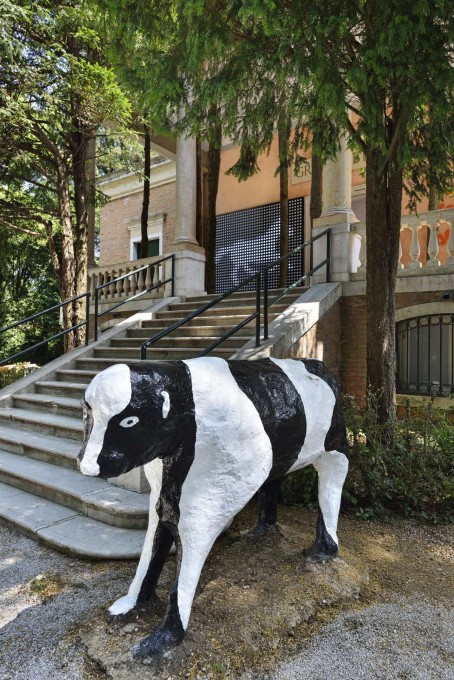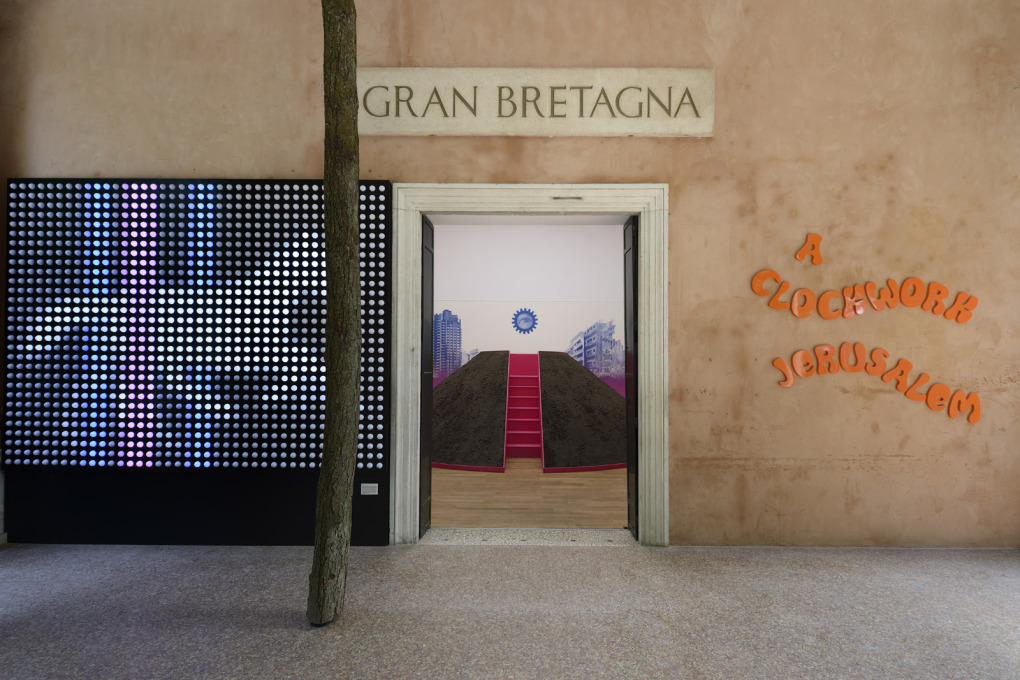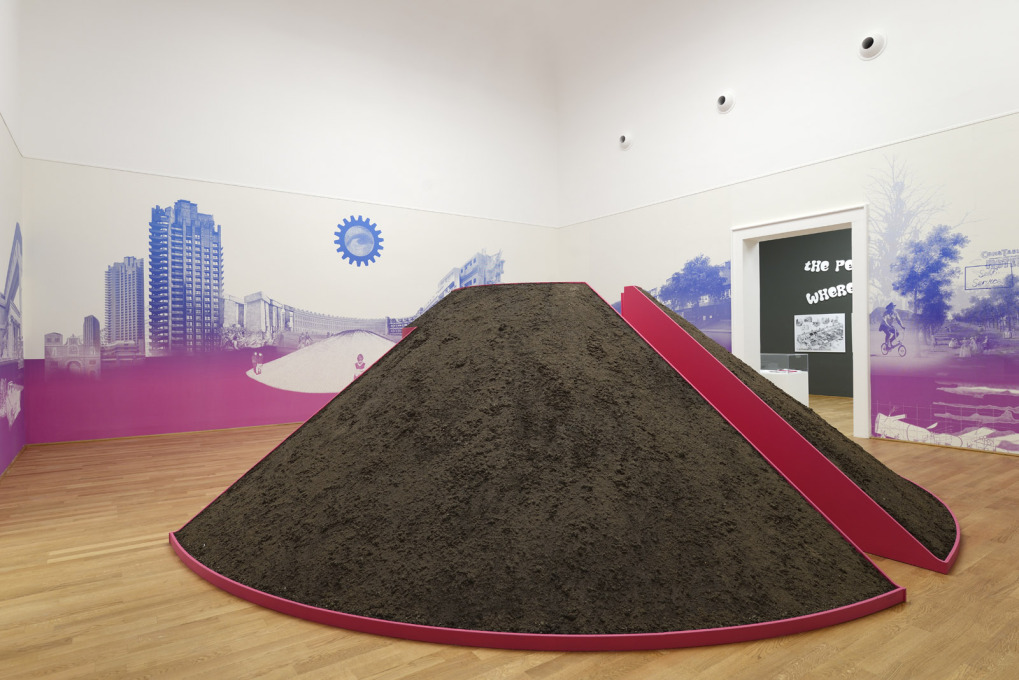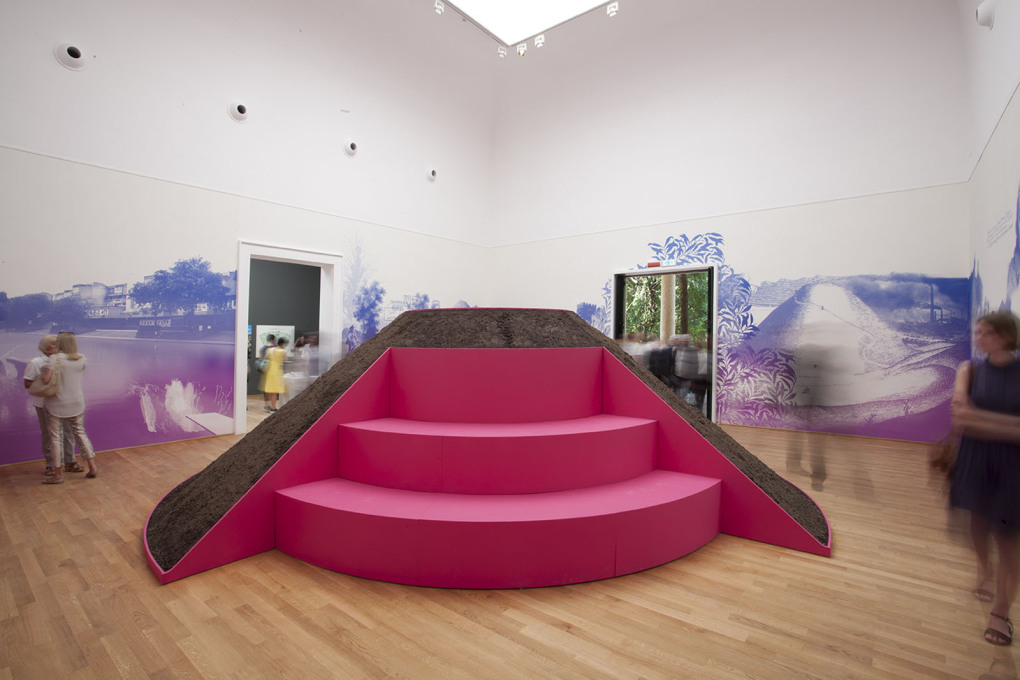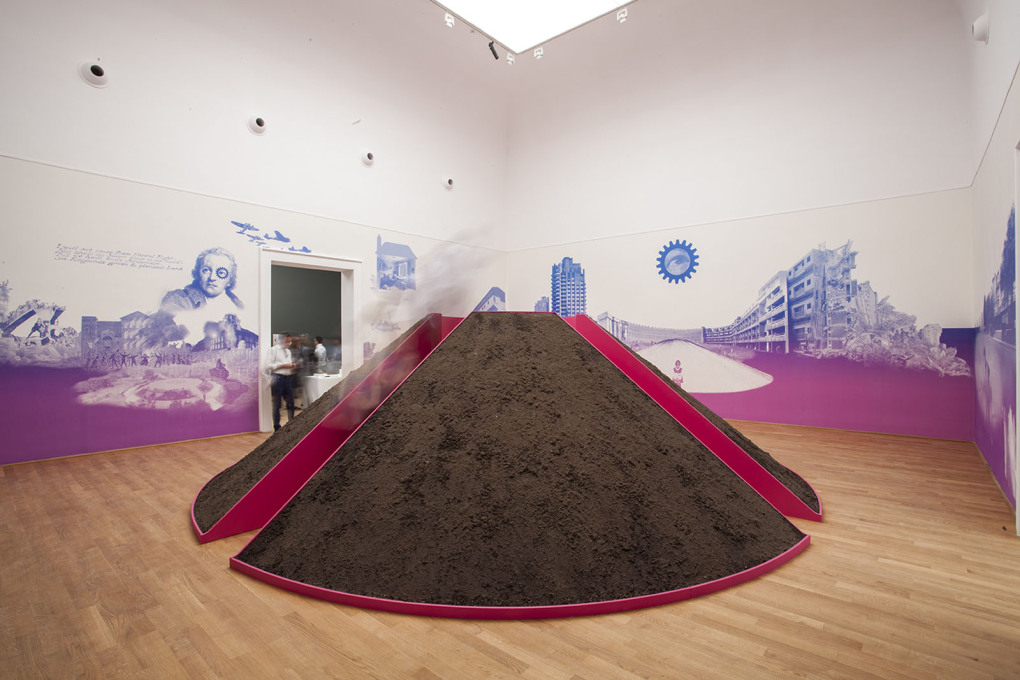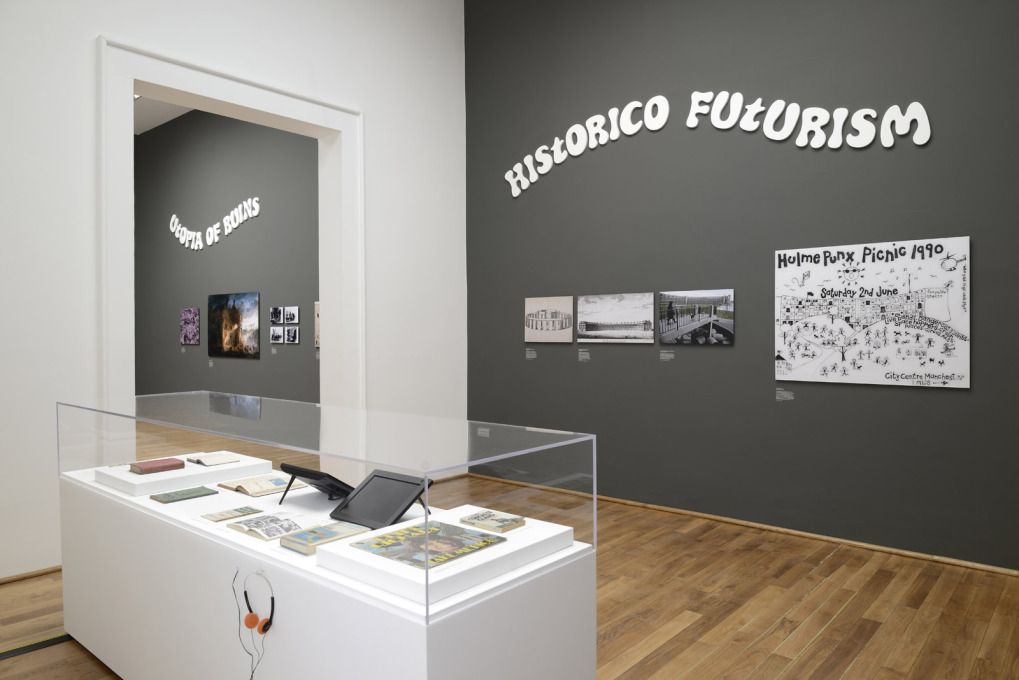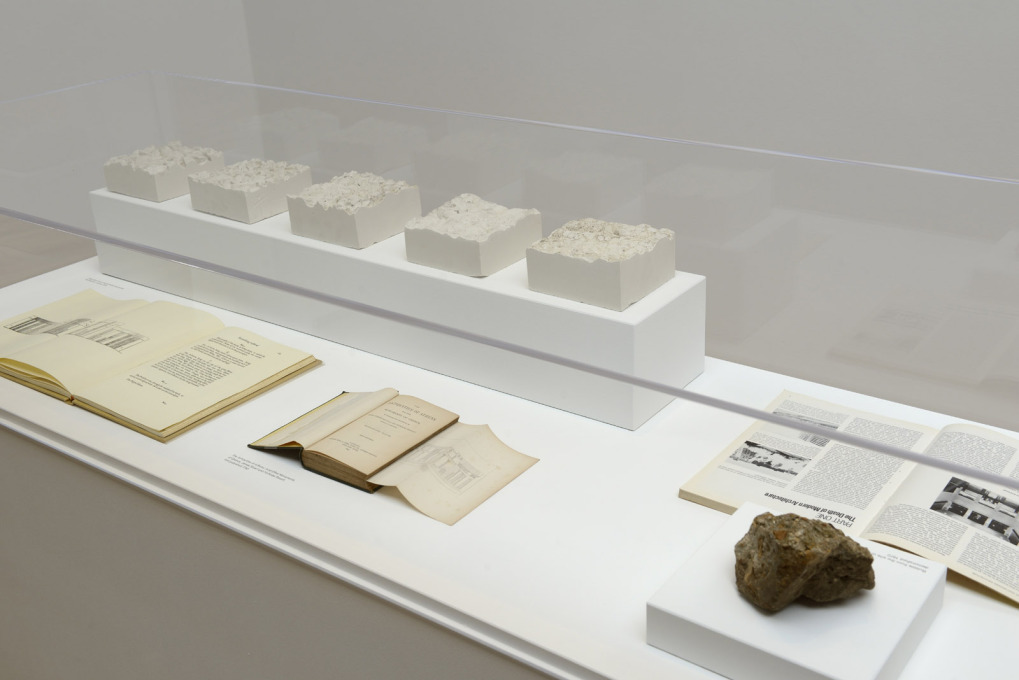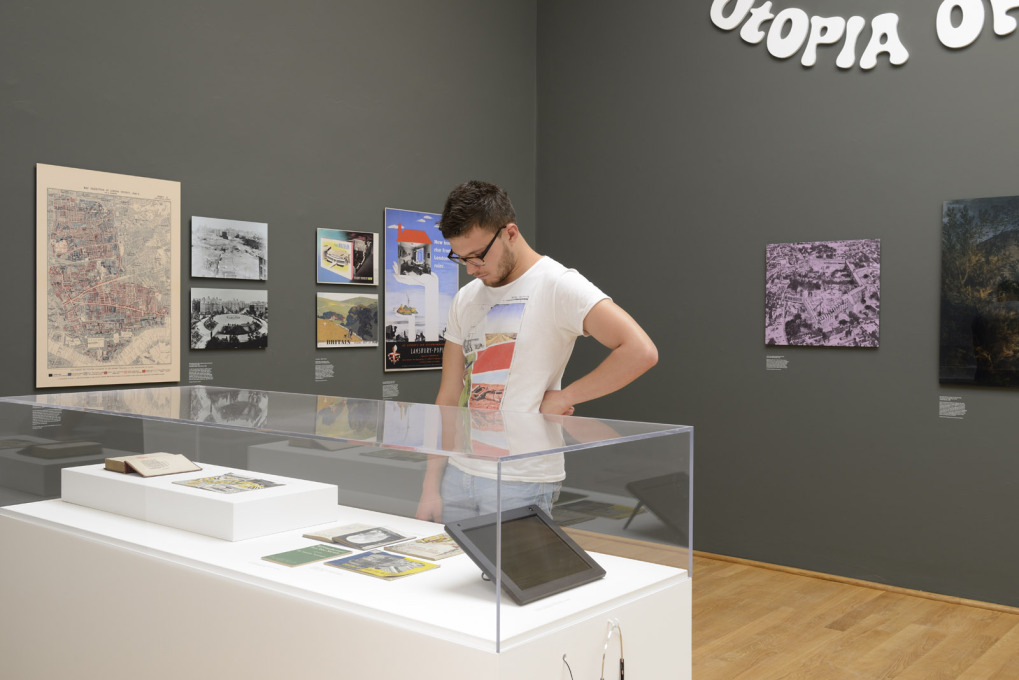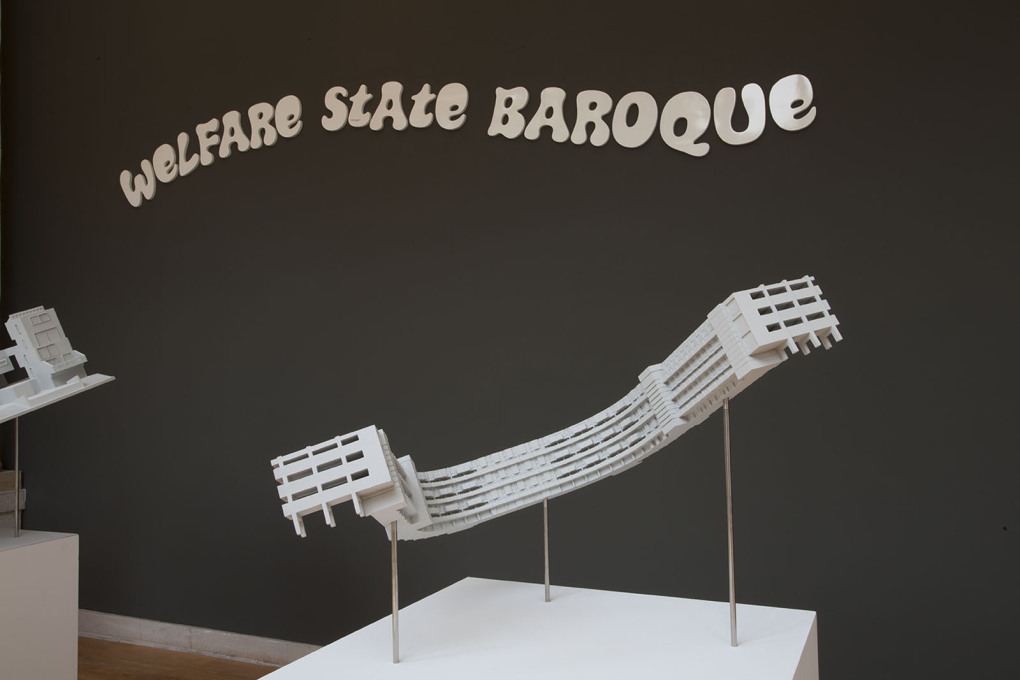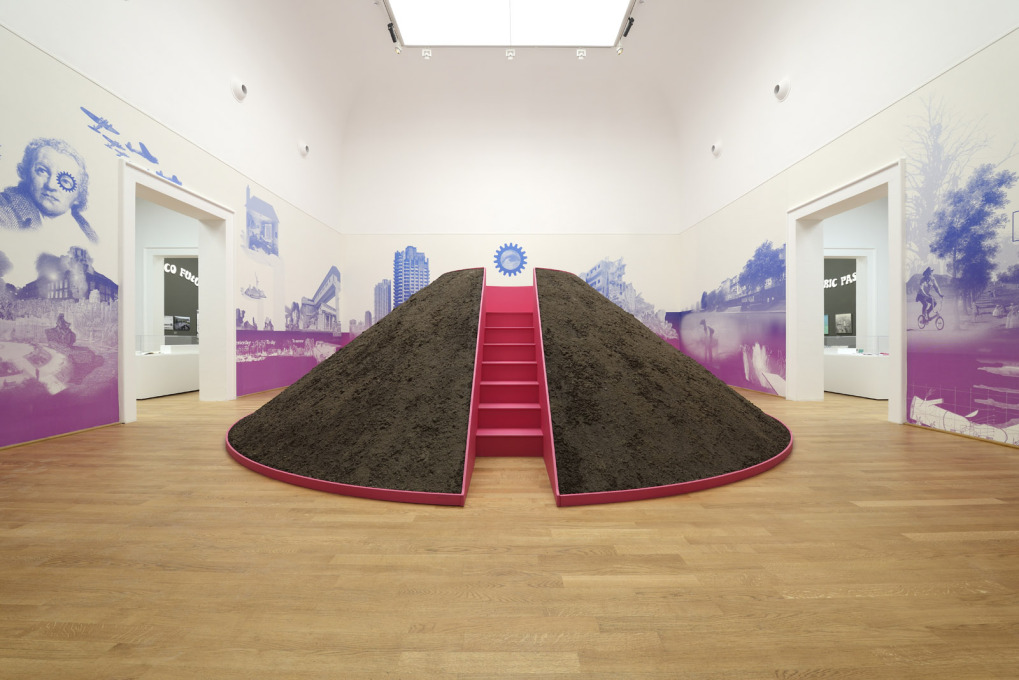The British Pavilion’s take on Rem Koolhaas’ theme of “Absorbing Modernity 1914-2014” for the national pavilions, seems a bit of a mash-up to begin with – mixing the hardcore concrete brutalism of post-war reconstruction with the anti-urban pastoral aesthetic that the English have always seemed to entertain: dreaming of the country life not the city lights. But that’s the point.
Starting with the title: “A Clockwork Jerusalem”, a melding of the title of William Blake’s early 19th century poem Jerusalem, about “dark satanic mills” in “England’s green and pleasant land”, with that of A Clockwork Orange, Anthony Burgess’s darkly dystopian 1960s novel (turned into a film in 1971 by Stanley Kubrick, which used the then new concrete Thamesmead Estate in London as a backdrop), the British “absorption” of modernism, has always seemed to feel the need to mix the mythic with the modern, history with technological advance.
The installation in the Pavilion is both High Pop and memorial-like, with strong graphic elements underlying the theme accompanied by a museological streak. The different galleries, are named like different strata of an archaeology of modernism: “Electric Pastoral”, “Historic Futurism”, and vitrines and displays contain its ephemera and relics.
These range from a concrete fragment of the Pruitt Igoe housing estate in Chicago, whose demolition famously marked the “death of modernism” according to Charles Jencks, to photos of Joy Division in the Hulme housing estate in Manchester, to Cliff Richard’s 1981 video of his single Wired for Sound, seeing him roller-skating around the precincts of Milton Keynes.
And in the entrance space, the most striking element is a pink viewing mound, covered in earth imported from the landscaped mound in the centre of the soon-to-be-demolished East London housing block, Robin Hood Gardens, by Alison and Peter Smithson. There it was designed to have echoes of neolithic burial mounds, like that at Silbury Hill in Southern England, bringing a breath of the bucolic to the inner city.
We asked curators Wouter Vanstiphout of Crimson Architectural Historians and Sam Jacob of FAT Architecture to explain this constant looking-back-to-look-forward tendency that they present as a distinctive streak in British modernism.
– Rob Wilson





